12/05/18
K-State Current - December 5, 2018
K-State Current is a weekly news update for the Kansas Board of Regents to apprise the Regents on a few of the many successes and achievements made by K-State faculty, staff and students.
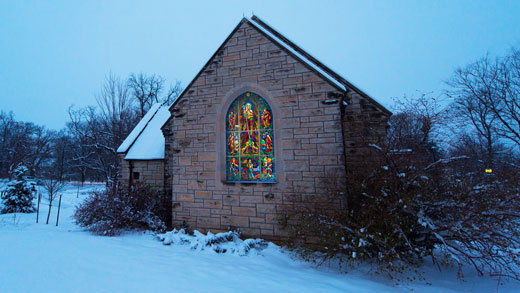
K-State News
Unearthing evidence: Kansas State University researchers examine processes that support soil health
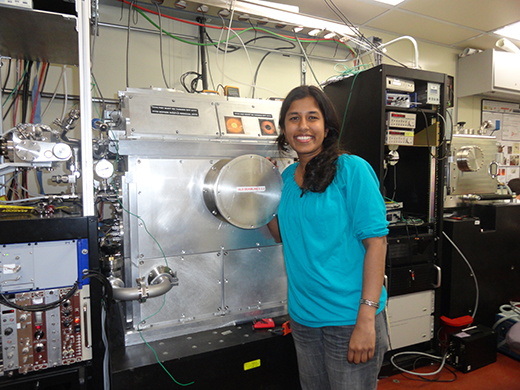
Healthy soil contains carbon — and a mystery. Some carbon remains in the soil for millennia, but some decomposes quickly and escapes into the atmosphere.
The latest research from Ganga Hettiarachchi, Kansas State University professor of soil and environmental chemistry in the department of agronomy, is helping scientists solve this mystery.
Scientists who want to keep carbon in the soil previously thought that some types of carbon were more stable than others, but recent work has suggested that all carbon is degradable. Hettiarachchi and her research team have applied a new technique to studying soil chemistry and found direct evidence that the surrounding environment and management practices heavily influence soil carbon stability.
Their study, "Sub-micron level investigation reveals the inaccessibility of stabilized carbon in soil microaggregates," is published in Scientific Reports, a Nature research journal.
Hettiarachchi led a team that mapped chemical information in tiny soil samples by adapting imaging and analysis techniques used in other fields, such as material and biological sciences. Using scanning transmission x-ray microscopy coupled with near edge x-ray absorption fine structure spectroscopy, known as STXM-NEXAFS, for soil — plus analyzing the data — was challenging, but it provided simultaneous gathering of both spatial and chemical/physical information. Hettiarachchi said the years-long project yielded worthwhile results.
"We know soil has the potential to be a 'sink' for carbon," she said. "Understanding the mechanisms of carbon storage, or sequestration, can help us choose management practices that encourage carbon sequestration."
Carbon sequestration helps farmers maintain soil health and productivity and protects against climate variability. Hettiarachchi's study found that no-till management practices and crop rotations helped protect carbon in the soil in the long term. The researchers used soil samples that came from Brazil, a tropical agroecosystem, under these management practices for a period of 25 years. Preparing samples required saturating them with water, snap freezing them with liquid nitrogen, cutting them with a diamond knife and then taking them to collect spectromicroscopic data at Advanced Light Source in Berkeley, California, and Canadian Light Source in Saskatoon, Saskatchewan. The team used traditional bulk soil analysis techniques to complement their results.
"Although it was challenging, the technique we used is a very powerful technique," said Pavithra Pitumpe Arachchige, a postdoctoral researcher who worked on the project with Hettiarachchi as a doctoral student. "We were able to image and study the composition of very small soil aggregates with preserved natural conditions."
"Applying novel techniques to soil carbon chemistry provides a better understanding of the role the soil microbiome plays in the fate of soil carbon," said Chuck Rice, university distinguished professor of agronomy. "Carbon is key to soil health and the environment."
The group also is studying Kansas soils and has more publications coming soon. Hettiarachchi said testing soil from contrasting climates and agroecosystems was important because tropical environments encourage rapid degrading of soil carbon.
"Even there, certain management practices and complex crop rotations help," she said.
The project was supported by the National Science Foundation, K-State Research and Extension and the Kansas State University Department of Agronomy.
Along the Silk Road: Explore art that links Asia to the West in new Beach Museum of Art exhibition
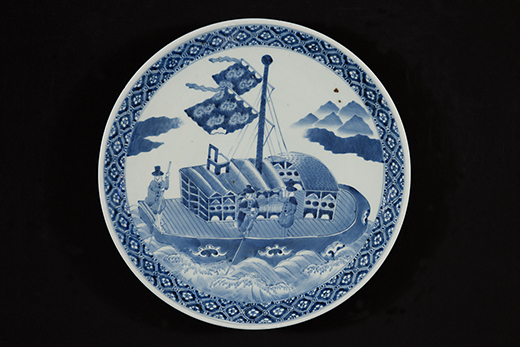
The exchanges, intermingling and occasional clash of cultures between Asia and the West along the Silk Road are on display in the new exhibition "Voices: Art Linking Asia and the West," opening Tuesday, Dec. 4, at Kansas State University's Marianna Kistler Beach Museum of Art.
The Silk Road refers to the trade routes linking Asia with the Mediterranean, Africa and Europe. This trade network flourished from the second century B.C. to the mid-15th century, enabling people, ideas, art and trade goods to move across land and sea.
In "Voices," which is part of the Beach Museum of Art's yearlong program series "Silk Road through Kansas," selected works from the museum's collection and a painting from the Kansas State University Historic Costume and Textile Museum demonstrate the exchanges still happening today between East and West by way of Kansas, even though the historical Silk Road is extinct. Works include the 1991 painting "Martin Cheng: Painter and Fisherman" by Roger Shimomura, professor emeritus of art at the University of Kansas; "Fan of Cheese and Sausage Pizza," a 2005 work by Kansas State University's Margo Kren, professor emeritus of art, that was painted on a fan she acquired in China; and the Historic Costume and Textile Museum's 18th-century scroll painting of the Virgin Mary and the Christ child with St. Joseph, which was made by a Chinese artist who fused Chinese landscape painting and iconography with Christian subject matter and some European painting techniques.
"Voices: Art Linking Asia and the West" runs through Dec. 21, 2019, and is co-curated by Aileen June Wang, Beach Museum of Art curator, and Sherry Fowler and Maki Kaneko, both professors with the University of Kansas Kress Foundation Department of Art History.
The following are activities related to "Voices" and "Silk Road through Kansas" to be offered in 2019 at the Beach Museum of Art. All events are free and open to the public, and more information is available on the museum's website, beach.k-state.edu.
- East Meets West Game Night will be 5-7 p.m. Thursday, Jan. 24. Enjoy games we play today that actually originated from various countries in Asia and the Middle East, including chess, Mancala, Go, Parcheesi, and Snakes and Ladders. Hot chocolate and cookies will be available.
- The talk/performance "Search for Simurgh" will be 5:30-7 p.m. Thursday, Feb. 14. Kansas State University's Kate Digby, assistant professor of dance, will share her work on the immersive, interactive performance installation "Search for Simurgh," currently in development. Digby is collaborating with experimental media artists and scientists on the piece, which draws on the writings of artist Roya Movafegh, who escaped Iran during the revolution.
- The Silk Road to Kansas: East Asian Art and Global Flow Symposium, from 11 a.m. to 1 p.m. Friday, Feb. 22, will feature research presentations by students in the graduate seminar class Silk Road to Kansas: East Asian Art and Global Flow, which was team-taught by KU's Fowler and Kaneko as part of the Beach Museum of Art's "Silk Road through Kansas" project. The students conducted research on objects related to the theme of exchange in the collections of the Beach Museum of Art and Washburn University's Mulvane Art Museum.
- The documentary "Music of Strangers: Yo-Yo Ma and the Silk Road Ensemble" will be screened from 5:30-7:30 p.m. Tuesday, Feb. 28. The documentary is the story of how renowned cellist Ma brought together the international musical collective, the Silk Road Ensemble. Discussion will be offered after the screening and light refreshments will be provided.
- Director Dan Chen will screen and discuss his films "Just Doug" and "Ella" from 5:30-7:30 p.m. Thursday, March 28. Chen grew up in Manhattan and now works as a filmmaker in Los Angeles. His films tell stories about being Asian American in Hollywood and growing up Asian American in a small Midwest town. A reception will follow.
- The talk and demonstration by Shozo Sato, "The History and Art of Tea," will be offered at 5:30 p.m. Thursday, April 18. A professor emeritus at the University of Illinois, Sato is a master of traditional Zen arts and recipient of the Order of Sacred Treasure from the emperor of Japan for his contributions in teaching Japanese traditions.
"The Silk Road through Kansas" is a collaborative project organized in partnership with regional art institutions. Programs at Kansas State University are organized in partnership with the university's Asian American Student Union. The Mulvane Art Museum, the Ulrich Museum of Art at Wichita State University, the Birger Sandzén Memorial Gallery in Lindsborg and the Spencer Museum of Art at KU are offering related exhibitions and public events. Check their websites for more information.
Major support for the "Silk Road through Kansas" program at the Beach Museum of Art is provided by grants from the Greater Manhattan Community Foundation's Lincoln & Dorothy I. Deihl Community Grant Program and the Kansas State University Confucius Institute, with additional sponsorship by the Manhattan Broadcasting Company.
K-State Faculty Highlight
Phil Tiemeyer, associate professor of history in the College of Arts and Sciences, 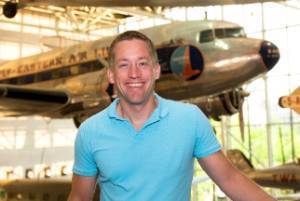 will moderate the panel "Breaking Boundaries in the Sky" at 8 p.m. Eastern Standard Time on Wednesday, Dec. 5, at the Smithsonian National Air and Space Museum in Washington, D.C.
will moderate the panel "Breaking Boundaries in the Sky" at 8 p.m. Eastern Standard Time on Wednesday, Dec. 5, at the Smithsonian National Air and Space Museum in Washington, D.C.
"Breaking Boundaries in the Sky" will be presented online for free at airandspace.si.edu/events/breaking-boundaries-sky.
The panel will feature aviators from diverse backgrounds as they share how they overcame barriers to become commercial airline pilots. Presenters include Beverley Bass, the subject of the Broadway musical, "Come From Away," and Refilwe Ledwaba, a South African social entrepreneur and pilot passionate about youth development and economic empowerment of women in Africa.
"It's great to see K-State faculty such as Dr. Tiemeyer involved in the national conversation on issues of racial and gender diversity as it relates to their fields," said Kimathi Choma, assistant dean for diversity, recruitment, and retention in the College of Arts and Sciences.
"So many children who visit the Smithsonian Air and Space Museum share the same sense of wonder about the miracle of flight," Tiemeyer said. "Sadly, our society through the decades has imposed restrictions — based on gender or race — on who can actually fulfill their childhood dreams to become a pilot. I'm excited that K-State will play a role in presenting these female and African American aviation pioneers to the public."
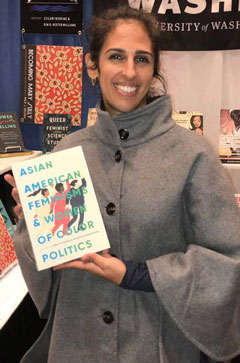 Shireen Roshanravan, associate professor of American Ethnic Studies, published "Asian American Feminisms and Women of Color Politics" with the University of Washington Press.
Shireen Roshanravan, associate professor of American Ethnic Studies, published "Asian American Feminisms and Women of Color Politics" with the University of Washington Press.
Co-edited with Lynn Fujiwara, associate professor at the University of Oregon, the book brings together original essays to map Asian American feminist politics. The essays confront settler complicities, motivate cross-racial solidarity, and challenge cultural justifications for sexual and gender violence shaped by the model-minority racial project and neocolonial projects of the U.S. empire.
Copies of the book are available for order from the University of Washington Press.
K-State Student News
Ten Kansas State University graduate students earn honors at Research and the State
Research on weed control for food crops, early pancreatic cancer detection, threats to the biodiversity of tallgrass prairie ecosystem, animal feed biosecurity, and the social and economic impact of sustainable textile production are the focus of some of the winning research presentations by Kansas State University graduate students who were selected to represent the university at the 16th Capitol Graduate Research Summit, Feb. 26, 2019, at the State Capitol in Topeka.
Ten students were chosen to present their work in Topeka based on their research presentations at Research and the State on Nov. 8. The event involved 43 participants from six academic colleges and 19 graduate programs. It was sponsored by the Graduate Student Council, the Graduate School and the Office of the Vice President for Research. Each winner received a $250 scholarship.
"The winners of Research and the State showcase the outstanding and diverse research being conducted at K-State that has direct benefit to the state of Kansas," said Carol Shanklin, dean of the Graduate School. "The winners will communicate the value of their research to the state legislators, the Kansas Board of Regents and the public when they present at the Capitol Graduate Research Summit in February. This event is one of the many opportunities that the Graduate School and the Graduate Student Council collaborate to enhance our graduate students' ability to communicate their research to the public."
The Capitol Graduate Research Summit is an annual statewide summit that features current research of graduate students at Kansas State University, the University of Kansas, the University of Kansas Medical Center, Wichita State University, Emporia State University, Fort Hays State University and Pittsburg State University. A university professor and an industry representative will judge the poster and student presentations. The top presenter from each university will be awarded a $500 scholarship. In addition, BioKansas will award a $500 scholarship to a student from each university whose research has the greatest potential for commercialization.
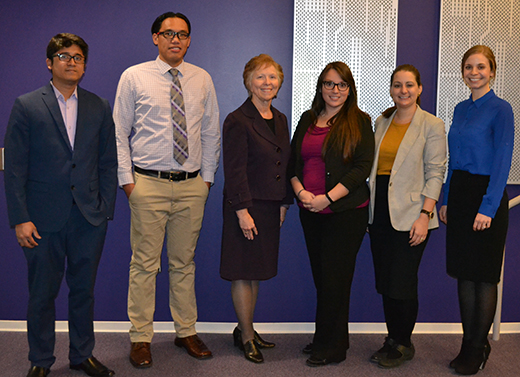
The following Kansas State University graduate students were selected to present at the Capitol Graduate Research Summit:
• Obdulia Covarrubias Zambrano, doctoral student in chemistry, Liberal, Kansas, for "Liquid biopsy: The simplest technique for pancreatitis and pancreatic cancer detection." Her faculty advisor is Stefan Bossmann, professor of chemistry.
• Erin Ward, master's student in family studies and human services, Brooklyn Park, Minnesota, for "Soy protein is an efficacious alternative to whey protein in fortified blended foods." Her faculty advisor is Brian Lindshield, associate professor of food, nutrition, dietetics and health.
• Emily Pascoe, doctoral student in apparel, textiles, and interior design, Forked River, New Jersey, for "Designing home goods for socially responsible production: A lions-in-four sponsored project for manufacture by multiskill-level artisans in Kerlala, India." Her faculty advisor is Sherry Haar, professor of apparel, textiles, and interior design.
• Rory O'Connor, doctoral student in biology, Coquille, Oregon, for "The future of woody plants in the great plains." His faculty advisor is Jesse Nippert, associate professor of biology.
• Kent Connell, doctoral student in biology, Cleveland, Tennessee, for "Plant-soil history has lasting effects on soil organic matter decomposition." His faculty advisor is John Blair, university distinguished professor of biology.
• Niloy Barua, doctoral student in chemical engineering, Chittagong, Bangladesh, for "High throughput screening of microbial interactions with microwell arrays." His faculty advisor is Ryan Hansen, assistant professor of chemical engineering.
• Chandrima Shyam, doctoral student in agronomy, State West Bengal, India, for "Rapid metabolism of 2,4-D increases the resistance in common waterhemp (Amaranthus tuberculatus) under high temperature." Her faculty advisor is Mithila Jugulam, associate professor of agronomy.
• Balaji Aravindhan Pandian, doctoral student in agronomy, Tamil Nadu, India, for "Genetic basis and inheritance of mesotrione tolerance in grain sorghum." His faculty advisor is Mithila Jugulam, associate professor of agronomy.
• Sylvester Badua, doctoral student in biological and agricultural engineering San Jose City, Nueva Ecija, Philippines, for "Potential of soy protein as an alternative seed lubricant in row crop planters." His faculty advisor is Ajay Sharda, assistant professor of biological and agricultural engineering.
• Ana Stoian, doctoral student in pathobiology, Bucharest, Romania, for "Survival of African swine fever virus (ASFV) in feed ingredients under transboundary shipping conditions." Her faculty advisor is Bob Rowland, professor of diagnostic medicine/pathobiology.
JMC students are winners at South Central Broadcast Society competition
Students in the College of Arts and Sciences' A.Q. Miller School of Journalism and Mass Communications were recognized by the South Central Broadcast Society at its annual conference last month in Houston, Texas.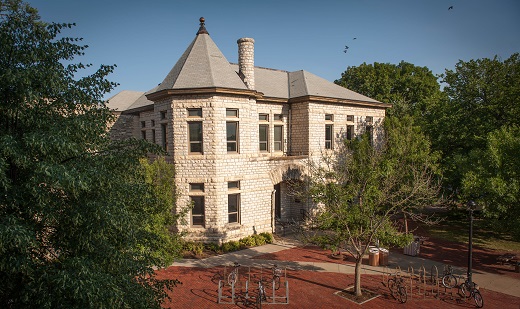
In the audio category for radio, Evan Penner was recognized as a grand prizewinner in the regional broadcasting conference, Oct. 18-20. Penner, a spring 2018 graduate, won for his spot production, "Village Geek," an underwriting spot for the Village Geek, a gaming store in Manhattan.
James Copeland, graduate student in mass communications, received honors as a finalist on two categories. The first for his entry "News Deserts" in the hard news category and the second for his news or sports talent category entry, "James Copeland," a compiled aircheck of some of newscasts, severe weather reports and breaking news coverage. Receiving recognition as semifinalist in the news feature category was Trace Salzbrenner, sophomore in journalism and mass communications, for his entry, "JMC Scholarships," a hard news package about scholarships available to students.
In the video category for television and video production, Penner and Reina Garcia, also a spring 2018 graduate, were recognized as semifinalists for their promotional video entry, "Drama Therapy," that promotes the work of Professor Sally Bailey from the K-State School of Music, Theatre, and Dance and her work with autistic students through drama and theatre.
Recognized as a semifinalist was Channel 8 News' broadcast, "KSUnite," a newscast highlighting the events of the first KSUnite rally on campus. This show was produced by Miya Hodge, a December 2017 graduate.
Finalists for each category are from the top 20 to 30 percent of entries. The South Central Regional Conference and Competition is an association of more than 30 university broadcast programs in the south central region of the U.S. The competition is open to students and coordinated by broadcast programs in Arkansas, Colorado, Kansas, Missouri, Louisiana, New Mexico, Oklahoma and Texas.